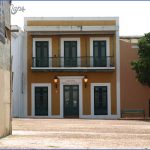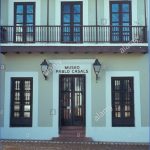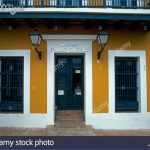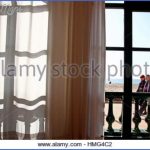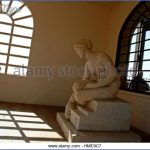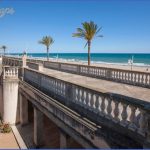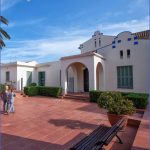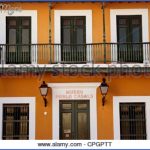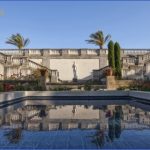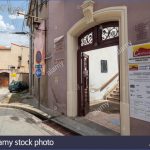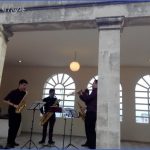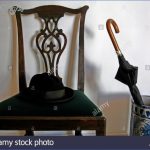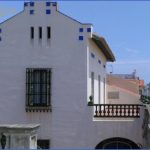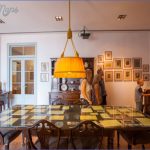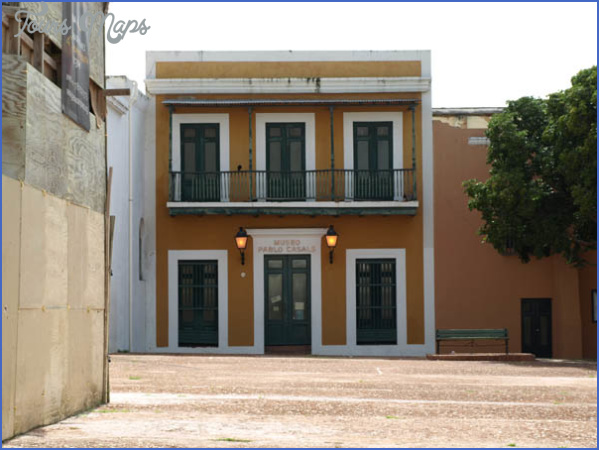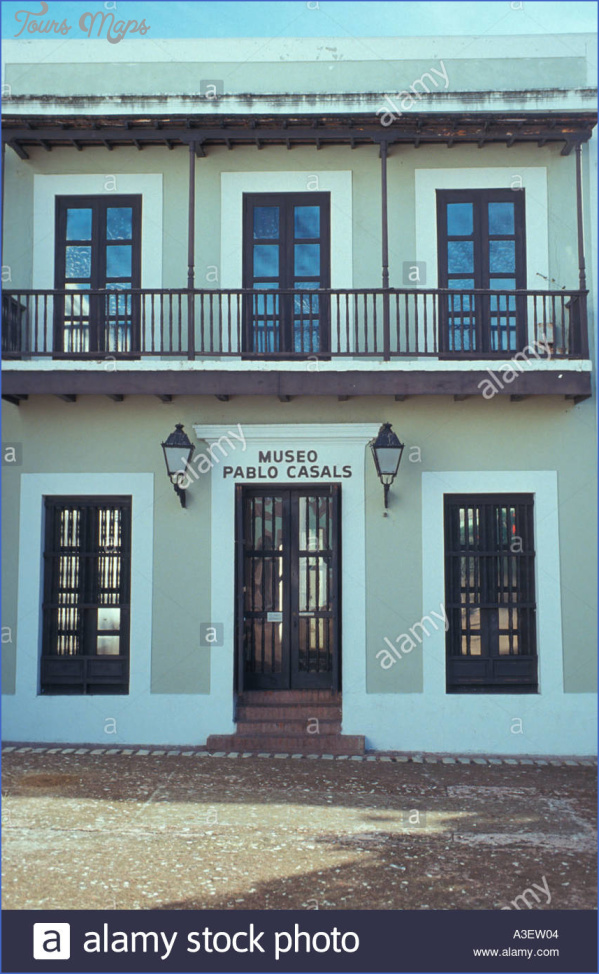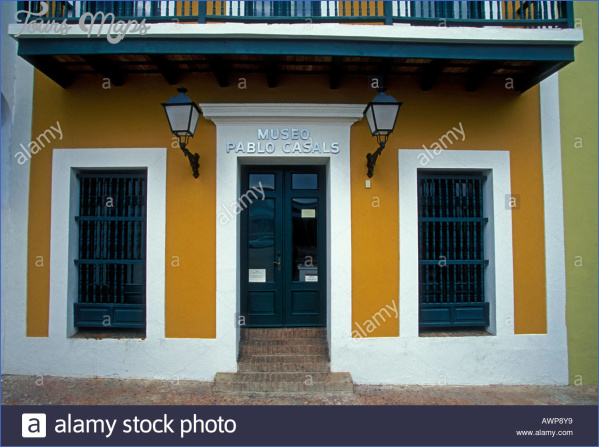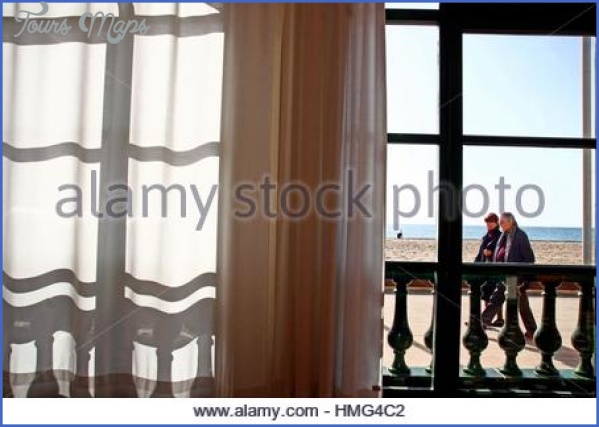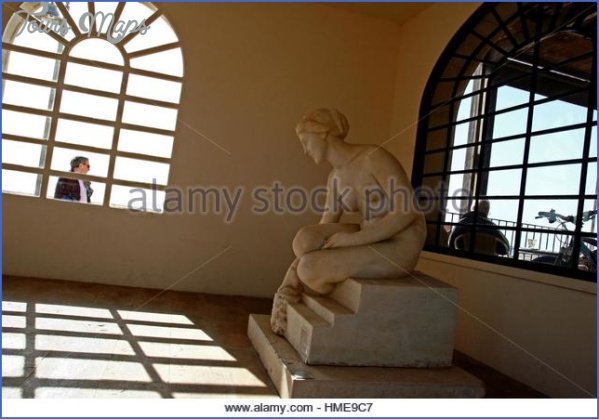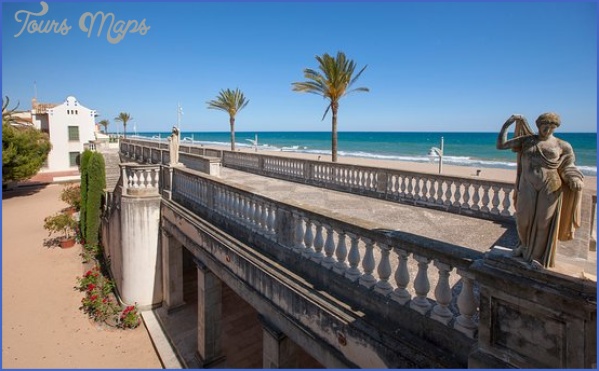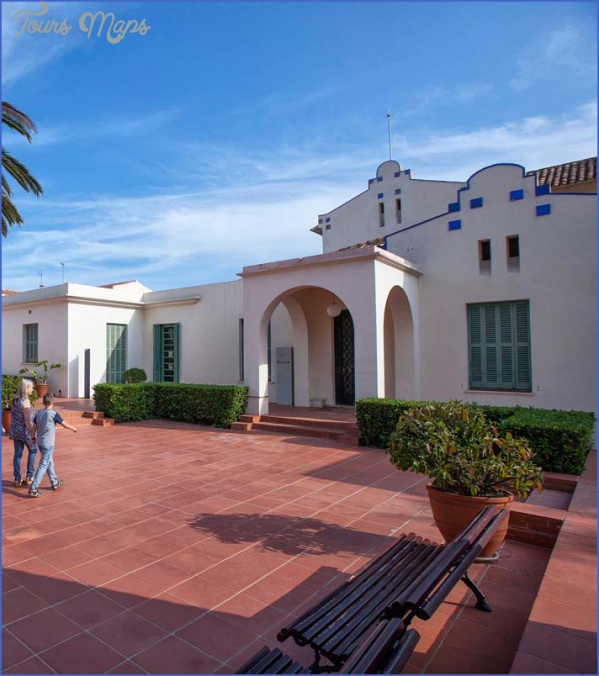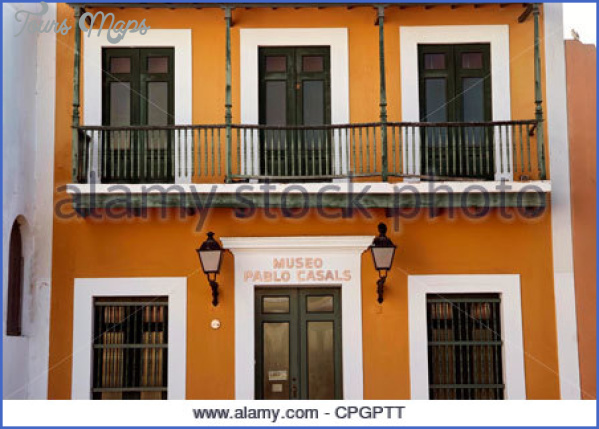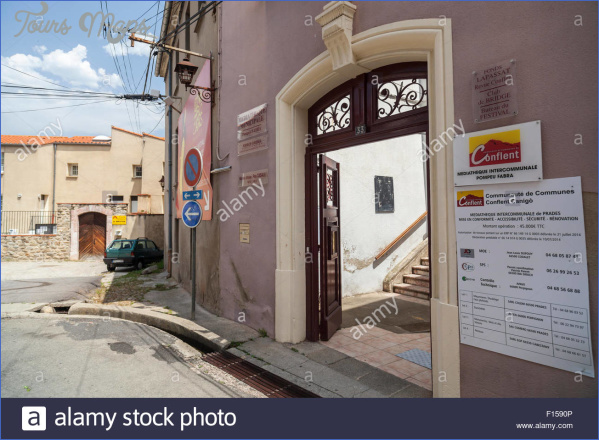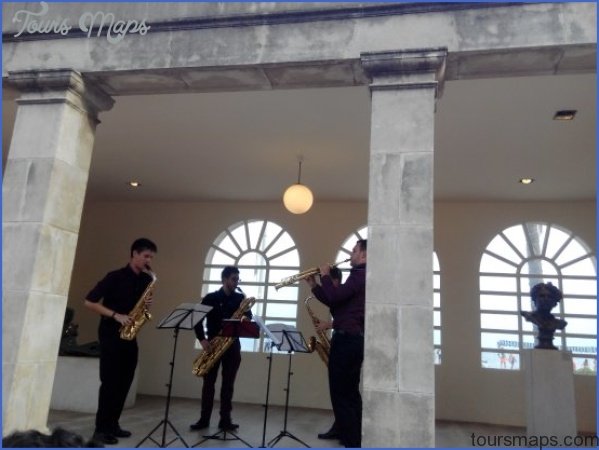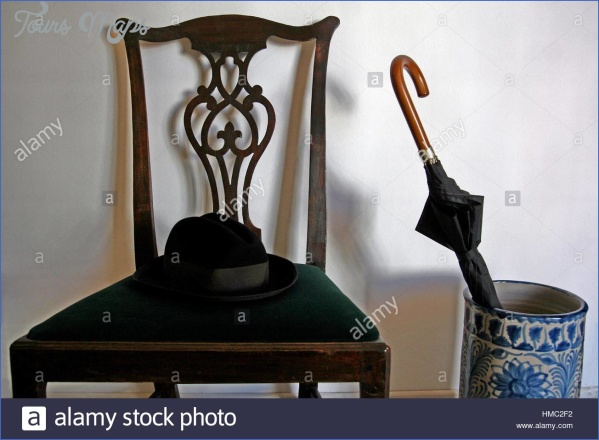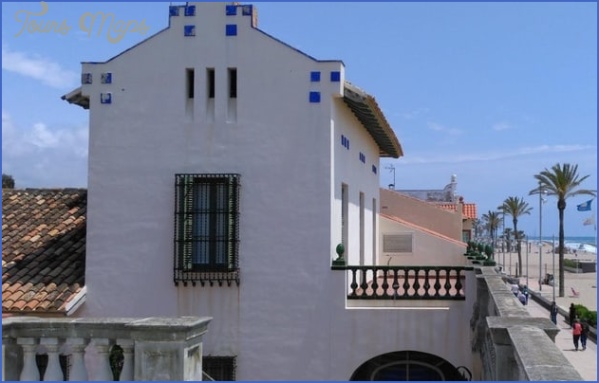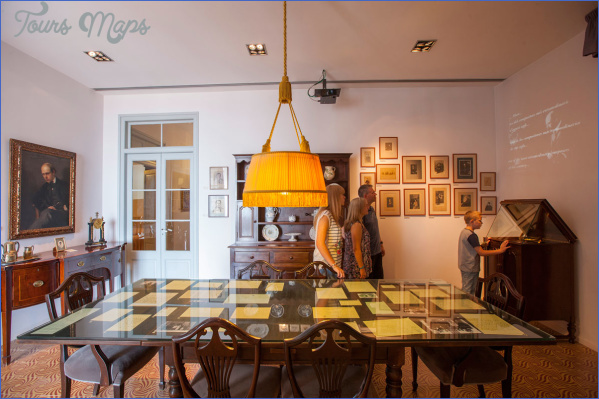CASALS MUSEUM
Casals, the great cellist, a composer? Yes, though mainly in the service of his faith and of his mentorship of younger cellists. For Pablo – or Pau, as he was known in his native Catalonia – was above all a man of conscience and humanity. He was fortunate both that his genius was recognized early and admired by the Queen-Regent Maria Cristina of Spain, by Queen Victoria and later by Queen Elisabeth of Belgium and the American First Lady Jacqueline Kennedy; and that his early career coincided with the advent of recorded sound. A champion of Bach’s solo suites, Casals at once popularized the cello and, through his work in Barcelona during the 1930s and in France during the Franco years, associated the instrument with the greatest crusade of the century: freedom from oppression. In 1958 he made a speech and played for the delegates of the United Nations; in 1971 they awarded him the Peace Medal; in 1977 they commemorated his courage by erecting a bust by Robert Berks at the UN in New York. In the meantime, Casals undertook to conduct his oratorio El pessebre (‘The Manger’) all over the world and, in recognition of his efforts on behalf of democracy and world peace, President Kennedy presented him in 1962 with the highest American honour, the Medal of Freedom. Casals rose from humble but musical beginnings in the small town of El Vendrell, on the north-eastern coast of Spain. The evidence is plain to see, for his birthplace and spartan childhood home, not far from the Eglesia de Sant Salvador where his father served as organist, is open to the public. A man of principle, Casals forsook the comforts and luxury that artistic success had brought him -evidenced by the seaside villa he built in 1909 at Sant Salvador (close to El Vendrell) and enjoyed as a summer retreat until 1936, now a museum – in response to the Spanish Civil War and later the atrocities of Nazi Germany. He chose retirement from the world stage and indigent exile rather than tacit condonation. The quiet French Pyrenean-Catalan border town of Prades was his home and the base of his efforts on behalf of refugees between 1939 and 1956. In 1950 he came out of retirement to celebrate the bicentenary of Bach’s birth and founded an annual music festival at Prades that brought together some of the finest musicians from all over the world (and still continues).
His departure from Prades six years later was prompted by his desire, at the age of 80, to retire and marry again (over the years he had many mistresses, including the glamorous cellist Guilhermina Suggia, and as many as three wives). He chose as his final home Puerto Rico, where both his mother and his last wife, Marta Montanez (60 years his junior), had been born. He is commemorated in San Juan by a music festival and a museum. El Vendrell is the central port of call for Casals pilgrims. He claimed never to have forgotten ‘the child of El Vendrell that I was’. The simple stucco townhouse where he was born on 29 December 1876 and lived until he was 12 was opened to the public by the town fathers in 1998, on the 25th anniversary of his death. Serving parties of schoolchildren and cellists, it displays no original artefacts. Instead, it tells on the ground floor the story of Casals’s life, with quotations from his thoughts writ large on the walls, and on the upper floors presents the Casals family’s way of life in the house during the last quarter of the 19th century. Just south-east of the railway lines is the cemetery of El Vendrell where in 1979 his remains were brought from Puerto Rico and re-interred. A short distance due south from the town centre lies the Mediterranean resort of Sant Salvador, situated between Barcelona to the north-east and Tarragona to the south-west. Casals had known Sant Salvador from his childhood and in particular was familiar with the hermitage there, and it was here that he returned. Today the Vil-la Casals houses the Museu Pau Casals, which opened in 2001 and is owned and operated by the Fundacio Pau Casals. The walled complex includes a series of courtyards and formal gardens, esplanade and beach frontage, and a gift shop. The ten ground-floor rooms of the villa that surround an inner courtyard tell the story of his life. On display are a wealth of original instruments, furniture, documents, music manuscripts, editions and recordings, portraits and sculpture, photographs and film footage, awards great and small (among them the UN Peace Medal) and other personal possessions. In the music room facing the beach and the sea beyond, a video runs in which Casals plays the Allemande from Bach’s G major suite. In the final room there is an opportunity to watch a video of him conducting at the UN. Among the manuscripts of his compositions on display are his Sonata for piano and violin in D minor (Prades, 1940), his Hymn to the United Nations (Puerto Rico, 1971) and El cant des ocells (‘Song of the Birds’, 1972, known in both its choral and cello orchestra versions). Across the Avenida Palfuriana, which runs parallel to the coastline, is the Auditori Pau Casals, inaugurated in 1981 and seating 400, and
CASALS MUSEUM Photo Gallery
Vil-la Casals at Sant Salvador next to it the Placa J.S. Bach, with its compelling statue of a robed cellist (‘Bach es un miracle’) by Subirachs. When in 1939 Casals, under threat from the Franco regime, sought refuge on the French side of the Spanish border, Prades was barely more than a village. He stayed first at the Hotel Hostalrich in what is now the Avenue du General de Gaulle and then in a succession of loaned houses. To the residents he was something of a recluse, although visited by other famous musicians and even royalty. Local people and visitors to Prades would stop on the pavement outside his house to listen to him practise the cello (it is said that he habitually smoked his pipe while practising), and occasionally observe him walking his dog, swimming or playing tennis. By 1942 he was living at Villa Colette (today 34 route de Ria) with one of his students, Frasquita Capdevilla (whom he may have married on her deathbed in 1955), a niece and four members of the Alavedra family. They existed on a meagre diet, mainly the produce they were able to grow in the garden. Seen from the outside today (still called Villa Colette, it remains a private residence), the detached two-storey house with obligatory tiled roof, shutters and balcony retains its air of modesty. Casals is commemorated in Prades with a ‘promenade’ taking in seven places within the town. They include a view of the bust by Marcel Homs erected in 1975 at the corner of the rue du docteur Laviall and a stop at the Musee Pau Casals, currently housed in the Office de Tourisme. The museum collection was assembled by a local enthusiast, Jacques Anglade, who willed it to the festival. It includes some of the cellist’s clothes, photographic montages of Casals with other famous musicians (including the violinists Grumiaux, the Oistrakhs, Menuhin, Schneider and Stern, the cellist Tortelier and the pianists Serkin and Istomin) and friends (including Albert Schweitzer), an original score of El pessebre, an upright piano said to come from the Sant Salvador villa and a cello he evidently played in a private concert for the Queen of Belgium, as well as newspaper and magazine cuttings, festival programmes and recordings, portraits, plaster casts of his hands and various personal possessions (including his 1940 identity card and souvenirs from his travels). There is even a poster from his 75th birthday concert in Zurich, signed by the musicians (123 cellists!) who took part. Two kilometres south of Prades, along the avenue Pau Casals, is the Abbaye St Michel de Cuxa, where the Prades Festival events take place in late July and early August.
Casals had barely touched ground in San Juan before he began planning a new Festival Casals. What began in 1957 as a series of chamber concerts in his own house (his music room seated 200) in the hills above the capital are today glittering events in the Luis A. Ferre Performing Arts Centre, and among the most important in Latin America. In 1958 he helped found the Puerto Rico Symphony and the national conservatory. He was 96 when he died of a heart attack on 22 October 1973. He is commemorated in a small museum in a two-storey 18th-century building next to the cathedral in the main square of historic Old San Juan (101 Calle San Sebastian), a World Heritage site.
Maybe You Like Them Too
- Top 10 Islands You Can Buy
- Top 10 Underrated Asian Cities 2023
- Top 10 Reasons Upsizing Will Be a Huge Travel Trend
- Top 10 Scuba Diving Destinations
- World’s 10 Best Places To Visit

